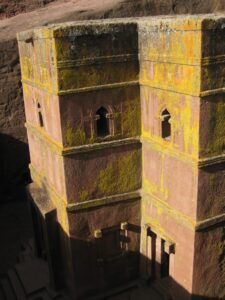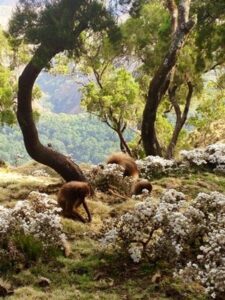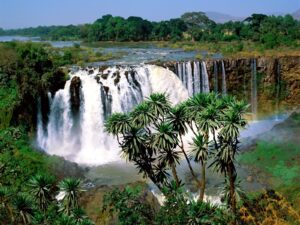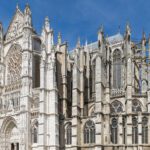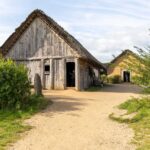A post-trip interview on Ethiopia with tour managers, Kelly Bryson and Heather Stoeckley
Welcome to this post-trip interview with the tour managers behind our Ethiopia Tour: The Wonders of the Horn of Africa. Our experiences often last over two weeks and can be a large investment in both time and money, which is why we carry out these post-trip interviews: we want to help people understand exactly what to expect from our trips.
If anything Kelly and Heather say here inspires even more questions than we cover here, please feel free to get in touch. We will be happy to answer any questions you have. You might also like to consider our wider range of Archeological Tours of Africa.
How long was your trip to Ethiopia and where did you visit?
The main tour – Addis Ababa, Axum, Lalibela, Gondar, Simien Mountains, Lake Tana – was 15 days, plus a 2-day extension to Harar and a 5-day extension to the Omo Valley in the Southeast part of the country.
So, some people on the tour had a 15-day experience. Others explored Ethiopia for 17 days, and those who chose both extensions enjoyed the full 23-day experience.
What do you consider the biggest highlights of the trip?
Ethiopia has a rich history and a vibrant cultural heritage surrounding Eastern Orthodox Christianity. Each city and region offered its own unique highlight.
Big highlights, of course, included the amazing stelae of Axum, the delicate rock-hewn churches of Lalibela, the powerful royal enclosure of Fasil Ghebbi in Gondar, the hungry gelada baboons of the Simien Mountains, and the richly adorned small churches on the islands of Lake Tana.
The Omo Valley was a once-in-a-lifetime opportunity to interact with indigenous tribes whose traditional lifestyle and way of dressing is rapidly disappearing.
What was the most memorable moment of your trip to Ethiopia?
Exploring the churches of Lalibela was a very powerful experience. The devotion and faith that brought about these magnificent creations are truly mind-boggling.
The intricacy of each structure was purely inspiring. Another memorable moment was standing mere feet away from dozens of Gelada baboons as they foraged through the vegetation. In our opinion, the natural beauty and stunning vistas of the Simien Mountains are unrivaled!
What did you learn from your study leader, Dr. Luisa Sernicola?
Dr. Sernicola was extremely thorough in all of her explanations — particularly when exploring the transition between the various time periods.
She was always very apt at pointing out the Pre-Axumite features of the Axumite sites where present which really added an additional layer to each site we visited.
Did you have the opportunity to interact with local people in Ethiopia? If so, what were your impressions?
Yes, we met local people at every church. We met the most people in the Omo Valley. Ethiopians are innately friendly and eager to meet foreigners. They have big, radiant smiles, peaceful demeanors and a welcoming attitude… All of my interactions with them were very positive.
What are two interesting things about Ethiopia that people might not know?
#1 – Injera is incredible
The local bread, injera, is made from a grain called teff. On tour, we found out that there are different types of teff – white, red, and mixed. Injera can be made from each variety. Also, depending on teff accessibility and availability in the region, some injera is made with rice, corn, or barley flour. Also, injera is delicious and it has an excellent texture.
#2 – Ethiopia is the birthplace of coffee!

The word coffee is thought to derive from kaffe, a province on the southwestern side of the country where the Arabica bean grows wild. The coffee in Ethiopia is incredible and they have their own ritualized way of making, pouring, and consuming this delicious beverage.
What advice would you give to others who want to travel to Ethiopia?
There are so many reasons to visit Ethiopia! In addition to this wealth of sites, the cultural and territorial diversity keep travelers on their toes as there is always something new to take in.
From a logistical standpoint, it is an easy country to visit as well. Ethiopian Airlines offers non-stop flights to Addis from Washington DC (plus they partner with United Airlines for connections). The opportunities for adventure and cultural exchange in Ethiopia are vast!
